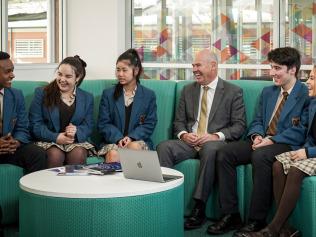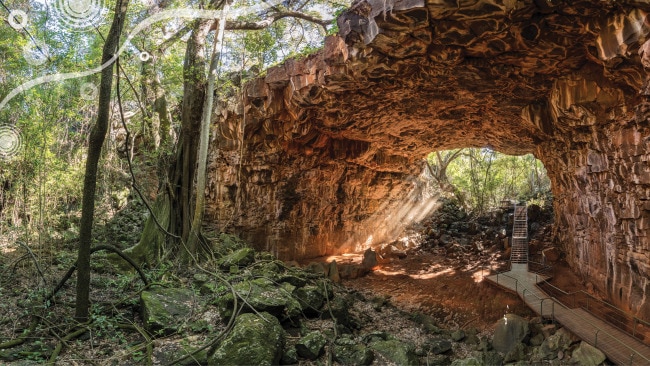LIVING, LEARNING, LEADING. A Vision for the future
Catholic Education is about more than academic success: it’s about recognising the abilities of each and every student, creating opportunities to help them achieve their goals and become ambassadors for a better world

Catholic Education is about more than academic success: it’s about recognising the abilities of each and every student, creating opportunities to help them achieve their goals and become ambassadors for a better world
With a 99.5 per cent SACE completion rate across the state, Catholic Education has been long-recognised for its academic excellence. But, for Dr Neil McGoran, who took over as director of Catholic Education South Australia (CESA) in September 2017, it’s about more than just turning out A+ students: it’s about helping to develop wonderful human beings who can go out into the world and make a difference, no matter how small.
To this end, Dr McGoran has introduced the Living, Learning, Leading framework, which sits at the heart of everything Catholic Education represents. The framework starts with a fundamental view of a person and their parents’ ambitions for them, then goes on to look at the strengths of each individual young person, exploring how educators and families can help to shape those qualities. “We have called those key capabilities, which are similar to the general capabilities in the Australian curriculum but include spiritual awareness and the inspiration of your faith to make a difference in the world,” Dr McGoran says.
Helping Dr McGoran to create his new vision for Catholic Education was spending time during the past two years visiting schools to see the work they do, meeting the children, teachers and principals and obtaining a sense of what it is parents find so wonderful about the education their children are receiving. This satisfaction, he discovered, comes from the principles of Catholic Education which encompass a fundamental belief in young people and their right to a relationship with God, with themselves, with other people, with learning and with the world, and an opportunity to shape those rights in powerful ways.
“I have recognised that the base we have to build on is immense,” Dr McGoran says. “The vision is that every young person who is part of our school would feel immense empowerment as an individual, comfortable in who they are – a comfortable confidence, I like to call it. Just as importantly is that they can manage complex debates by remaining respectful to people and to divergent views, are real leaders for change in the world and put other people’s needs at least alongside and often ahead of their own.
“Absolutely I can say our academic outcomes are first class,” he continues. “And the outcomes of our young people in the sense of quiet confidence and the commitment to their families and their relationships with each other, and the conscience they develop in wanting to give back to the world are first class as well.”
The compelling impact of Catholic Education on the world was brought home to Dr McGoran when he attended the Catholic Education World Congress in New York in June this year. “There are Catholic schools in more than 100 countries in the world, with enrolments of more than 63 million; nearly half of those in Africa,” he says. “It’s amazing to realise the significant role Catholic Education is playing in trying to deal with inequity and to bring about an education that is socially just – that was very powerful for me. Catholic Education is a partner in world development: its fundamental mission is to bring about a better world and provide opportunities. We understand and are open to that role: we’ve been playing that role for 175 years in South Australia alone.”
The success of Catholic Education over these 175 years, Dr McGoran stresses, is due to the combination of top-quality educators, the support of parents and the local community and an enrolment policy that welcomes students of all religions and ethnicities. “We have parish schools in remote and regional areas, big colleges, a school for young mothers, technical colleges, special units ... it’s a rich tapestry that includes providing a place for everybody and ensuring their success as human beings,” he says.
“We’re always trying to ensure our young people and families have the best facilities possible. Our facilities by and large are paid for by families, the direct result of our families’ commitment to their childrens’ education and to Catholic Education, and we’re incredibly grateful for that. When we have those facilities and amazing educators and fantastic leaders and young people who understand who they are and how they’re going to relate to people and change the world, you have something special.
Originally published as LIVING, LEARNING, LEADING. A Vision for the future


